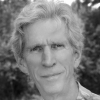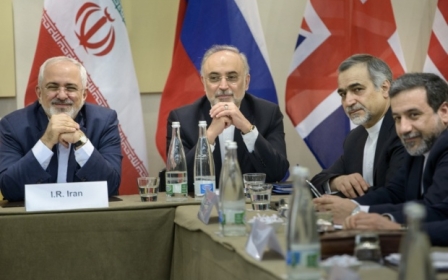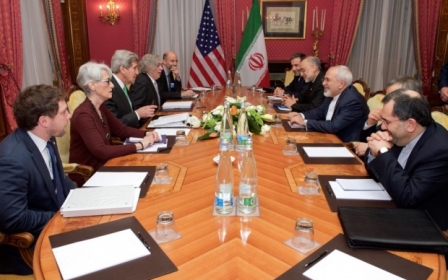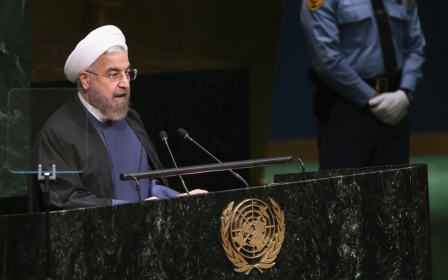Demands in US-Iran nuclear talks as political Kabuki theatre

In the final phase of the negotiations with Iran, the US-led international coalition is still seeking Iran’s agreement to allow the International Atomic Energy Agency (IAEA) to visit any military facilities it deems suspicious and to interview a selected list of Iranian nuclear scientists.
Such measures are not necessary to ensure that Iran is adhering to its commitments under the agreement, but they are necessary to manage the political threat from the pro-Israel extremists in the Senate to sabotage the whole agreement.
To fend off that threat, the Obama administration made the spurious claim that it had succeeded in getting Iran to agree to the demand for IAEA inspection of any site it found suspicious. In fact, Iran had agreed only that IAEA would have “enhanced access through agreed procedures” – as reflected in the wording of the joint statement of the P5+1 and Iran on 2 April. Iran’s supreme leader Ali Khamenei and senior military officials have vehemently ruled out both IAEA inspection of military sites on demand and interviews with Iranian scientists.
IAEA Director General Yukiya Amano claimed on 12 May that Iran’s acceptance of the Additional Protocol as part of a comprehensive nuclear deal meant that Iran had accepted inspections of its military sites on demand. “In many other countries from time to time we request access to military sites when we have the reason to, so why not Iran?” Amano said. “If we have a reason to request access, we will do so, and in principle Iran has to accept it.”
But that was a brazen misrepresentation of the Additional Protocol. That agreement allows unrestricted IAEA access to sites that have already been designated previously by state as related to the nuclear fuel cycle. For all other sites, IAEA access under the Additional Protocol clearly depends on the approval of the state in question. Article 5 (c) of the agreement, provides that, if the signatory state is “unable to provide such access,” it “shall make every effort to satisfy Agency requests without delay through other means”.
Now the New York Times has further muddied the waters by reporting on 31 May that the Iranian rejection of those demands had “prompted concern that Iran might be backtracking from understandings sketched out in earlier talks”.
The Times tries to support the US demand by asserting that “experts” say “wide-ranging inspections are needed to guard against cheating”. That is a reference to the argument that opponents of a nuclear deal with Iran have been making for years that Iran is likely to try a “sneakout” route to nuclear weapons, using covert supplies of enriched uranium or plutonium and a covert enrichment facility.
The main figure to make that argument is David Albright, the founder of the Institute for Science and International Security, a Washington think tank on nuclear proliferation, who had testified on 24 March that Iran must be compelled to accept “anywhere, anytime inspections”. He argued that, without such inspections, Iran could “produce enough weapons grade uranium for a bomb while avoiding detection by the IAEA”.
Another source cited by the Times in the past for that argument is Gary Samore, who was Obama’s adviser on negotiations with Iran until early 2013. Last November, the Times quoted Samore as saying, “From the beginning, the administration thought a nuclear agreement with Iran would need elements to deal with the overt program and one to detect covert facilities.” After leaving the administration, Samore became President of the organisation called United Against Nuclear Iran (UANI), which got one-third of its funding in 2013 from Sheldon Adelson, the notorious right-wing extremist and the primary funder of Israeli Prime Minister Benjamin Netanyahu’s campaigns.
But, although Samore has frequently reiterated the argument that the primary danger is Iranian “sneakout,” he admitted to Times correspondent David Sanger when he was still in the Obama administration that if Iran tried to deceive inspectors by using covert facilities, “We’re pretty certain we would detect it.”
An analysis by Robert Reardon of the Belfer Center for Science and International Affairs at Harvard University published in 2011 explains why the alarmist views of the problem put forward by Albright and Samore are politically motivated. “The technical and resource barriers” to achieving a secret enrichment program, Reardon pointed out, “are likely prohibitive”. Iran would have to “find a foreign supplier willing and able to provide a substantial supply of yellowcake secretly and without detection,” he wrote. And then Iran would have to “build and operate a number of secret facilities,” which would involve a “significant risk of detection”.
The IAEA demand for interviews with Iranian scientists has long been contentious, because the IAEA wanted to talk with individuals based merely on the fact that their names had been found in the “laptop documents” collection. Those were the intelligence documents that the Bush administration claimed had come from a covert Iranian nuclear weapons program. Both Iran and former IAEA Director Mohamed El Baradei challenged the authenticity of those documents, which bear the fingerprints of Israel’s Mossad.
The Iranian objection to such requests was validated when Israel carried out a series of assassinations of Iranian scientists from 2010 through 2012. Israel’s Mossad had chosen its targets for assassination, moreover, on the basis of open publications and positions in the nuclear program that were publicly known. Iran has every reason to believe that Israel could obtain any information gleaned from IAEA interviews with scientists on their list to plan more assassinations.
Even before Israel began killing Iranian scientists and engineers, however, it had strong objections to the request for interviews with leading scientists and engineers. For years, the IAEA explicitly demanded classified engineering data on the redesign of Iran’s Shahab-3 missile, even though a senior IAEA official acknowledged to this writer that it meant compromising Iran’s national security. The official claimed it was necessary to prove that it had not been for the purpose of integrating a nuclear weapon into the missile. Iran’s military leadership undoubtedly drew the conclusion that IAEA demands for interviews with senior scientists and engineers were essentially an intelligence fishing expedition on behalf of US and Israeli governments.
A US State Department official told the Times that Iran had agreed to work on a “list of people and places for access”. That means they are simply going to recapitulate the long-running history of the IAEA-Iran negotiations over the issue.
Amano has steadfastly demanded to visit Parchin, where the Agency says Iran installed an explosives container the Agency says related to nuclear weapons research. Iran has made the counter-offer to let the IAEA carry out an inspection at Marivan, where, according to the Agency, Iran had carried out “large scale high explosive experiments” on the “multipoint initiation concept” for a nuclear weapon.
The IAEA has rejected the offer without any explanation. The refusal to visit what ought to be its highest priority suggests that either the IAEA doesn’t have the coordinates of the alleged site of the experiments or it has reason to doubt that it is going to find anything there. In either case, its refusal to visit the site reveals the reality that Amano is not carrying out an objective investigation but supporting US policy by keeping the political pressure on Iran for as long as the US deems it necessary.
Behind the US political posturing of which the Times story is a part, the US delegation is almost certainly preparing to give up its demands for visits to military sites on demand and interviews with Iranian scientists. Meanwhile, however, we can expect the Kabuki theatre over those demands to continue as long as it can be useful for managing the Obama administration domestic political problems.
- Gareth Porter is an independent investigative journalist and winner of the 2012 Gellhorn Prize for journalism. He is the author of the newly published Manufactured Crisis: The Untold Story of the Iran Nuclear Scare.
The views expressed in this article belong to the author and do not necessarily reflect the editorial policy of Middle East Eye.
Photo: US Secretary of State John Kerry and Iranian Foreign Minister Javad Zarif during a previous session of nuclear talks (AFP)
Middle East Eye propose une couverture et une analyse indépendantes et incomparables du Moyen-Orient, de l’Afrique du Nord et d’autres régions du monde. Pour en savoir plus sur la reprise de ce contenu et les frais qui s’appliquent, veuillez remplir ce formulaire [en anglais]. Pour en savoir plus sur MEE, cliquez ici [en anglais].





